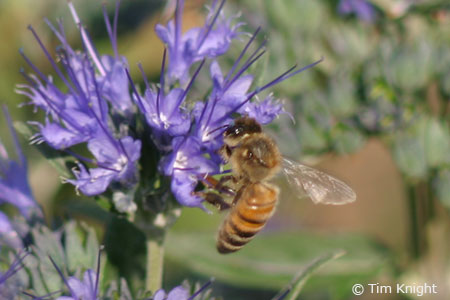
Home | About Us | Projects | Maps | Facts

Home | About Us | Projects | Maps | Facts
|
Honey bee (Apis mellifera) What they look like: Honey bee is a widely distributed flying insect know for its ability to collect nectar from flowers and produce honey. Honey bees (right) are mustard yellow and brown. They have stocky bodies that are covered with many hairs to which pollen adheres. The honey bee's primary value is as a pollinator of crops.
Where they live: Honey bees are not native to the Americas but were introduced by European settlers. The first introductions are believed to have occurred in the early to mid 1600s by English and Spanish settlers.
Behavior: Honey bees are social insects that live in large colonies. The queen bee, drones and worker bees all have specific tasks to help support the colony. The queen bee lays hundreds of eggs. The male drones' main function is to be ready to fertilize a receptive queen. Worker bees do all the different tasks needed to operate and maintain the hive. Reproduction: The queen bee lays all of the eggs in a colony. At the height of the season, she may lay over 2,500 eggs per day! The queen fertilizes each egg as it is being laid. The queen occasionally will not fertilize an egg. These non-fertilized eggs develop into male drones.
Did you know?

Honey bee collecting nectar. photo by Tim Knight More information: |
Animal silhouettes available to purchase »
Photos: Tim Knight
Home | About Us | How to Participate | Biodiversity Modules | Projects | Maps | News | Resources